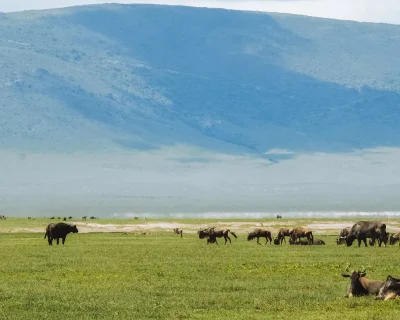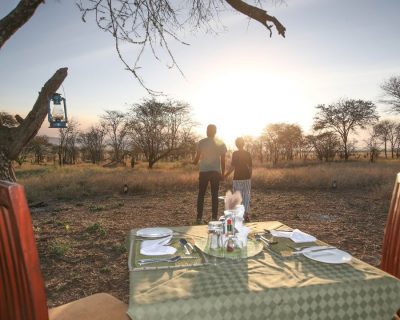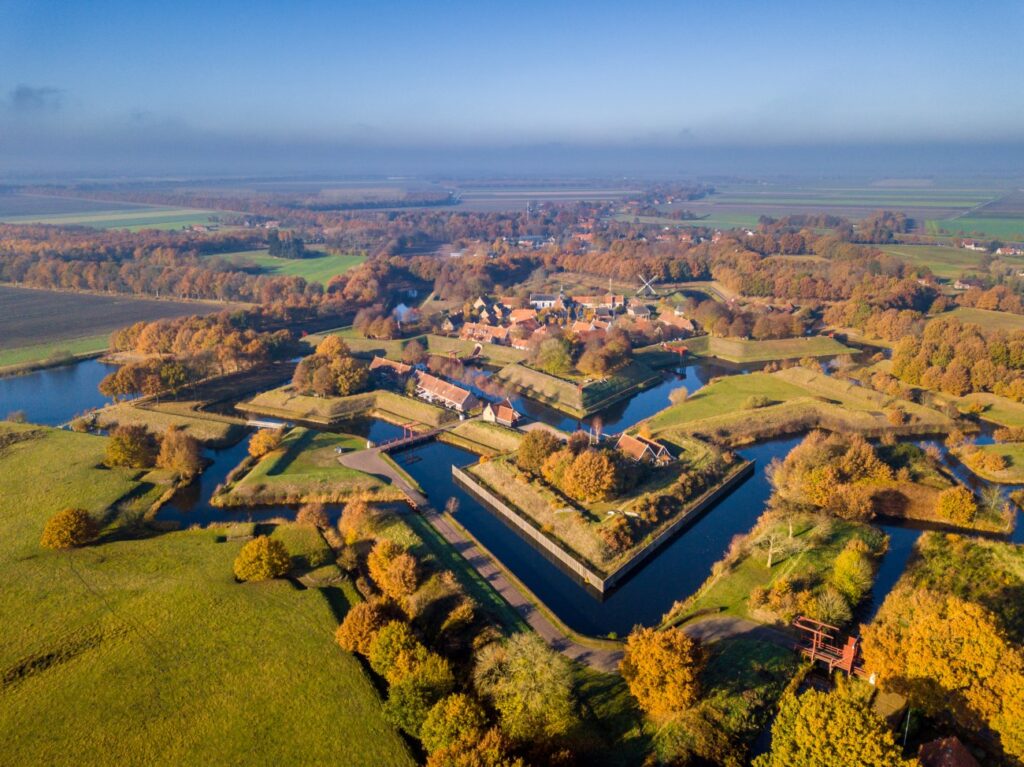Thinking of a Serengeti safari holiday in 2025? This year promises to be an exceptional time to visit due to several exciting developments. With enhanced conservation efforts and new eco-friendly lodges opening, 2025 offers a unique opportunity to witness the Serengeti’s wildlife in a more sustainable way. Additionally, the ongoing improvements in safari infrastructure mean better accessibility and comfort for travelers. This guide will detail the best times to visit, how to reach the park, accommodation options, and essential tips for a safe and unforgettable experience.
Key Takeaways
- Serengeti National Park boasts remarkable wildlife diversity and stunning landscapes, making it a premier destination for safari lovers.
- Careful planning is essential for your visit, including choosing the right season, arranging transportation, and packing appropriately.
- Engaging with Maasai culture and supporting conservation efforts are vital parts of the safari experience, promoting responsible tourism in the Serengeti.
Discovering Serengeti National Park
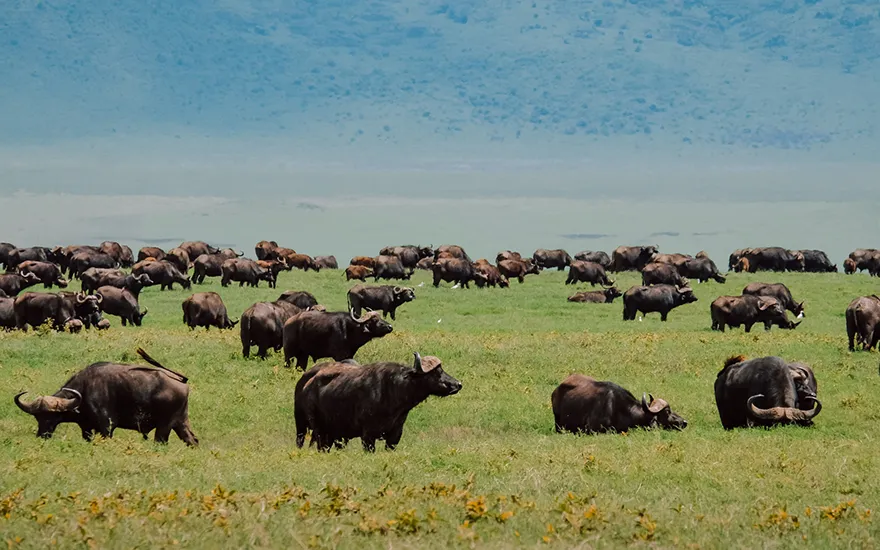
Serengeti National Park is renowned for its breathtaking landscapes and incredible wildlife density. Spanning over 14,750 square kilometers, the park is home to up to 2 million wildebeest, 1 million gazelles, 200,000 zebras, and large numbers of elephants and birds, making it a haven for wildlife enthusiasts. The dramatic wildebeest migration, one of nature’s most spectacular events, draws visitors from around the globe.
The terrain of Serengeti National Park is as diverse as its wildlife. From the endless treeless plains to savannahs dotted with acacia trees, and from granite rock outcrops known as kopjes to riverine bush and thick scrub, each landscape offers unique vistas and habitats for various species. This rich variety ensures that every safari tour presents new and exciting wildlife encounters.
Bordered by the Ngorongoro Conservation Area to the southeast and the Maswa Game Reserve to the west, Serengeti’s ecosystem extends beyond the park’s boundaries, creating a continuous wildlife sanctuary. Nearby attractions like the Ngorongoro Crater and Kenya’s Masai Mara further enhance the safari experience, offering even more opportunities for adventure and exploration.
Planning Your Serengeti Safari Holiday
When planning your Serengeti safari holiday, consider what motivates your trip. Are you drawn to witness incredible wildlife, seek thrilling adventures, or simply unwind in nature’s lap? Understanding your motivations will help tailor your itinerary to include the activities and experiences that matter most to you.
For many travelers, especially families from Europe and the United States, the summer months are a popular time to embark on a Serengeti safari. This period coincides with school vacations, making it an ideal time for families to explore the wonders of the Serengeti National Park together. The dry season, from June to October, offers optimal wildlife viewing opportunities, ensuring that both children and adults alike can enjoy the captivating sights of the African savannah.
Research is key to making the most of your Serengeti safari. Learn about its diverse wildlife, the stunning natural beauty of the vast plains, and the range of activities available. Carefully planning transportation, accommodations, and cultural experiences will ensure a fulfilling and memorable safari adventure.
When to Visit Serengeti
The Serengeti has distinct seasonal weather variations that greatly influence your safari experience. The best time to visit is during the dry season, from June to October, when wildlife viewing is at its peak. The landscape is less dense, making it easier to spot animals, and the Great Migration is in full swing, providing spectacular viewing opportunities.
However, if you’re interested in witnessing wildebeest calving season, plan your visit between January and February when the southern plains are teeming with newborns. The park transforms into a vibrant green during the long rainy season from March to May, offering lush scenery and fewer crowds, but it can make wildlife spotting more challenging.
How to Get There
Getting to Serengeti National Park can be an adventure in itself. You have several options, including drive-in safaris, fly-in safaris, and combination tours. Drive-in safaris typically involve a 4×4 vehicle guided by a driver/guide from Arusha, offering a scenic road trip through Tanzania. Fly-in safaris, on the other hand, provide a quicker and more comfortable journey, with flights landing at airstrips close to your lodge.
Combination tours allow you to enjoy the best of both worlds, mixing the convenience of flying with the immersive experience of driving through the African landscape. Consider your budget, travel time, and comfort preferences when choosing the best option for your trip.
What to Pack
Packing for a Serengeti safari requires thoughtful preparation. Lightweight, neutral-colored clothing is recommended to blend into the natural environment and avoid drawing unnecessary attention from wildlife. Additionally, prepare for dust, as the unpaved roads can create dust storms that may affect your equipment.
For photography enthusiasts, bringing two camera bodies can prevent dust from infiltrating your gear while switching lenses. Don’t forget essentials like sunscreen, a hat, insect repellent, and comfortable walking shoes to ensure a comfortable and enjoyable safari experience.
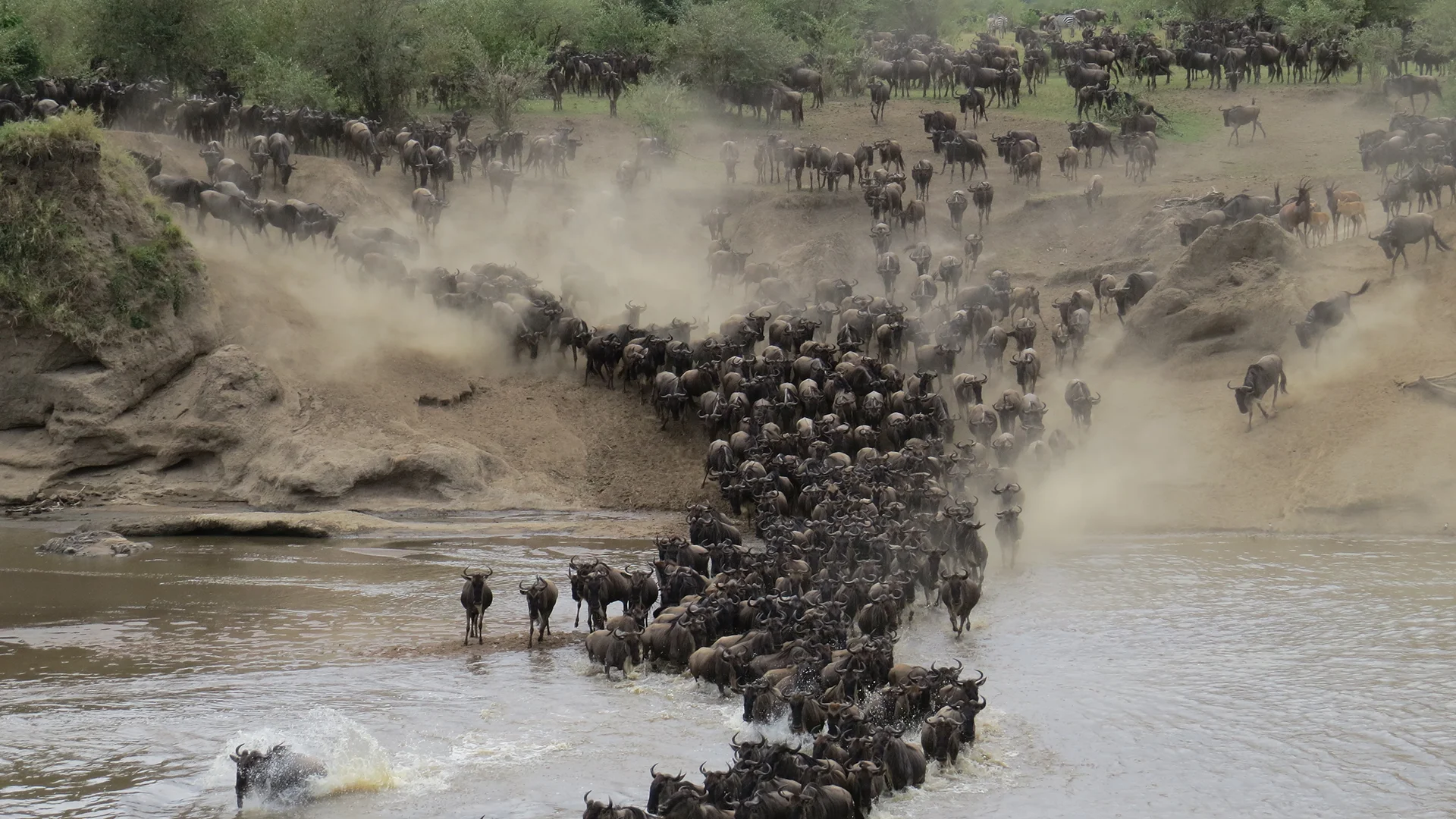
Experiencing the Great Migration
The Great Migration is one of the most extraordinary wildlife spectacles on Earth, and witnessing it in the Serengeti is an experience like no other. Every year, over a million wildebeest, accompanied by zebras and smaller animals such as gazelles, embark on a perilous journey in search of fresh grazing and water. This massive movement is dictated by seasonal rainfall, creating a dynamic and ever-changing scene.
The migration begins in the southern Serengeti, where the wildebeest breed from January to February. By April, they start heading northwards, traversing the western corridor and reaching the Mara River around September. The river crossings are particularly dramatic, as the animals face numerous predators and natural obstacles.
As October approaches, the herds begin their journey back south, completing the cycle of life and death that defines the Great Migration. This annual event is a testament to the resilience and instinctual behavior of these magnificent creatures, making it a must-see for any safari enthusiast.
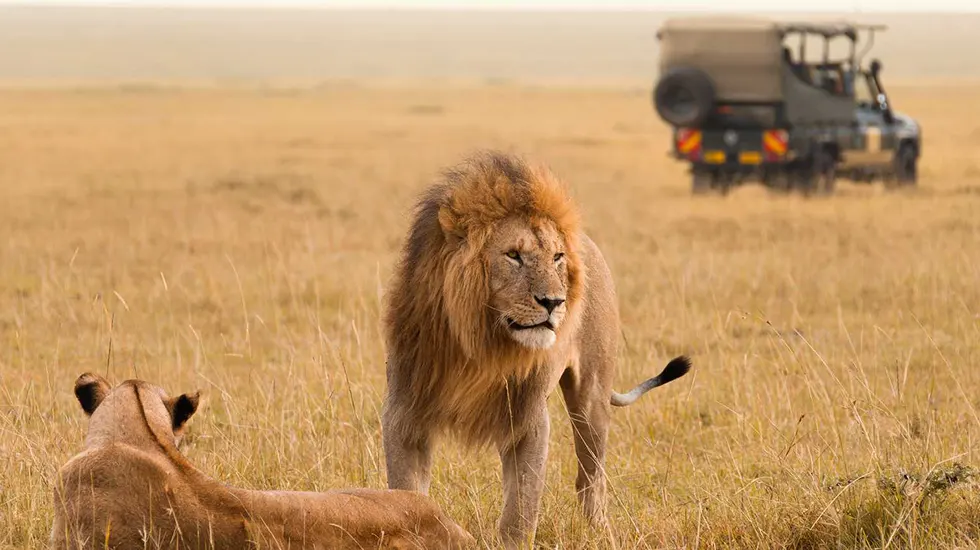
Wildlife Encounters: The Big Five and Beyond
A Serengeti safari offers unparalleled opportunities to encounter the Big Five: lions, leopards, elephants, rhinos, and buffalo. These iconic animals are often the highlight of any safari tour, providing thrilling and memorable sightings. But the Serengeti is home to much more than just the Big Five. The park’s diverse ecosystem supports a wide array of wildlife, from the famous tree-climbing lions to the elusive leopards and the majestic elephants.
Safari tours in the Serengeti frequently include guided walks and walking safaris to nearby attractions like Lake Manyara, further enriching your wildlife experience. Whether you’re a first-time safari goer or a seasoned traveler, the Serengeti’s natural world promises an adventure like no other through serengeti safaris, serengeti safari tours, and serengeti tours.
Spotting Apex Predators
Spotting apex predators like leopards and cheetahs is one of the most exhilarating aspects of a Serengeti safari. These stealthy hunters are often found near waterholes, where they lie in wait for unsuspecting prey. Waterholes are essential gathering points for many animals, providing excellent opportunities to observe predator-prey interactions.
Leopards, with their elusive nature and impressive camouflage, are particularly challenging to spot. Patience and a keen eye are crucial for catching a glimpse of these magnificent creatures in their natural habitat.
Birdwatching in Serengeti
For birdwatching enthusiasts, the Serengeti is a paradise with over 500 bird species to discover. The park’s diverse habitats, from open plains to riverine forests, attract a wide variety of birds, making every safari tour a birdwatching adventure.
The best time for birdwatching is during the wet season when migratory birds are present, adding to the already impressive array of resident species. From colorful bee-eaters to majestic raptors, the Serengeti’s birdlife is as captivating as its larger wildlife.
Lesser-Known Species
While the Big Five often steal the spotlight, the Serengeti is home to many lesser-known species that play vital roles in the ecosystem. Servals, with their long legs and large ears, are skilled hunters that primarily prey on rodents and birds. These elusive cats are fascinating to observe in the wild.
Hyraxes, small mammals with a unique evolutionary lineage, are often found among the rocks and are notable for their social behavior. The Serengeti also houses a variety of reptile species, including venomous snakes like the black mamba, which play important roles in the food chain.
These lesser-known species highlight the importance of diverse ecosystems in maintaining the Serengeti’s natural balance.
Accommodation Options: From Tented Camps to Luxury Lodges
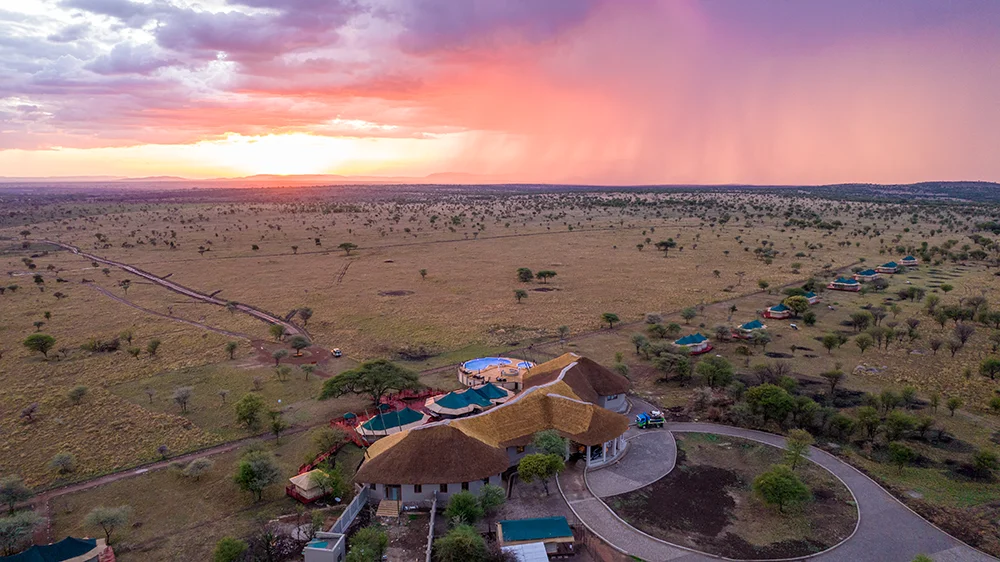
When it comes to accommodation in the Serengeti, there’s something for everyone. From mobile tented camps that offer an authentic bush experience to luxurious lodges that provide every comfort, you’ll find options to suit your preferences and budget. Staying in the heart of the Serengeti allows you to immerse yourself in the sights and sounds of the wild, making your safari experience even more memorable.
Whether you prefer the rustic charm of a tented camp or the opulence of a luxury lodge, following camp safety guidelines is crucial, as many camps are not fenced. Explore these accommodation options in more detail.
Staying in Tented Camps
Staying in tented camps offers a truly immersive Serengeti safari experience. These safari camps are often set up in the open bush, providing an adventure like no other. Without protective fences, you’ll fall asleep to the sounds of wildlife all around you, making for an unforgettable and authentic safari experience.
Mobile tented camps are particularly exciting, set up along the path of the migrating herds in Serengeti and Masai Mara. This proximity to nature allows guests to witness the Great Migration up close and personal.
Luxury Lodges
For a more comfortable and indulgent experience, luxury lodges in the Serengeti are ideal. These lodges offer extensive amenities, including spa services, gourmet dining, and private viewing decks. Staying at a luxury lodge enhances your safari experience with personalized services and exclusive wildlife encounters.
Many luxury lodges feature private guides who can tailor your safari activities to your interests, ensuring a unique and memorable stay in the heart of the Serengeti.
Budget-Friendly Choices
Budget-conscious travelers need not worry, as there are plenty of affordable accommodation options in the Serengeti. Mid-range lodges provide comfortable stays without the high costs associated with luxury lodges. These lodges offer a balance of comfort and affordability, making them ideal for those looking to explore the Serengeti on a budget.
Camping sites are another economical option, allowing travelers to experience the Serengeti’s beauty without overspending. Both mid-range lodges and camping sites offer unique experiences, catering to various preferences and budgets.
Thrilling Game Drives and Other Activities
No Serengeti safari is complete without thrilling game drives and other activities. The migrating wildebeest herds and their predators are key highlights during your safari experience. A typical 11-day Serengeti safari itinerary includes a variety of activities such as day and night drives, hot-air balloon rides, scenic helicopter flights, and guided nature walks.
Maasai safaris offer the unique opportunity to combine wildlife viewing with learning about local customs and daily life. These activities not only enhance your safari experience but also contribute to wildlife conservation and community development efforts in the Serengeti.
Daytime Game Drives
Daytime game drives are central to any Serengeti safari. A typical day involves early morning awakenings, wildlife viewing, and resting in the afternoon. Mobile tented camps enable travelers to experience wildlife closely while following the Great Migration.
Camping in open bush settings provides a more adventurous and immersive experience, allowing you to connect with nature in a profound way.
Night Safaris
Night safaris in the Serengeti offer a unique perspective on the park’s vibrant ecosystem. These safaris allow visitors to observe nocturnal wildlife rarely seen during the day. Seeing the Serengeti under the stars is truly magical.
Nocturnal animals like leopards, hyenas, and various species of owls become active at night, providing thrilling and rare sightings. Night safaris enhance the overall safari experience by showcasing a different side of the Serengeti.
Hot Air Ballooning
Hot air ballooning over the Serengeti is an unmatched adventure. Floating above the savannah offers breathtaking aerial views of the landscape and its wildlife. This unique perspective reveals the Serengeti in all its glory, from the vast plains to the intricate movements of the Great Migration below.
A hot air balloon ride at sunrise is truly mesmerizing. Watching the sun rise over the horizon, casting a golden glow over the earth, is a moment you’ll cherish forever. This adventure is a must for any traveler seeking to add a touch of magic to their Serengeti safari.
Cultural Experiences in Serengeti
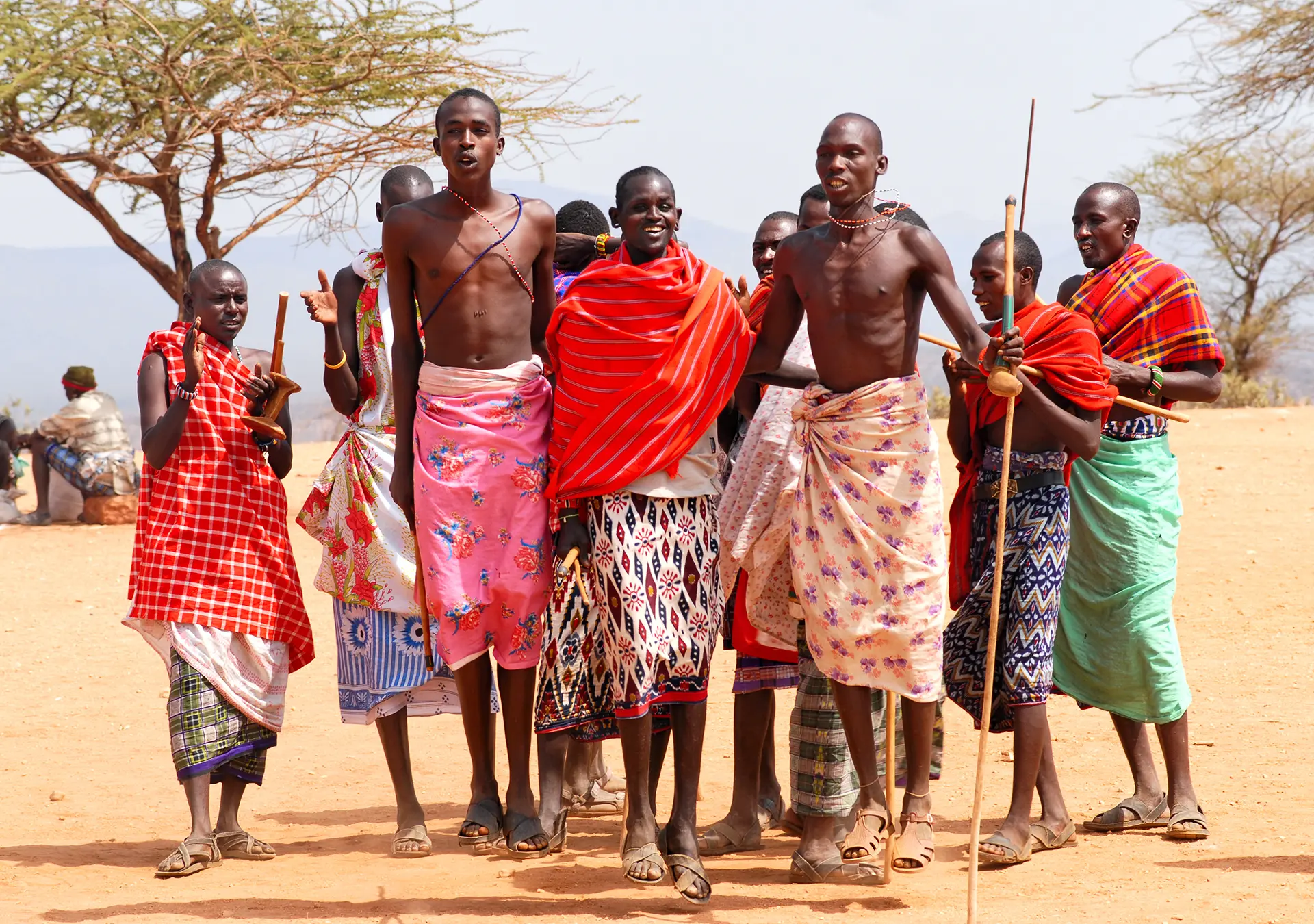
A Serengeti safari is an opportunity to immerse yourself in the rich cultural heritage of the Maasai people. Visiting their villages allows for direct interaction and cultural exchange, offering insights into their traditional way of life. Witnessing Maasai rituals, such as initiation ceremonies, traditional dances, and songs, adds a unique cultural dimension to your safari experience.
The Maasai practice a nomadic lifestyle, moving with their cattle to find fresh grazing land, reflecting their deep connection to the environment. Local communities are actively involved in conservation efforts, with initiatives that promote cultural tourism and sustainable environmental practices. TANAPA allocates part of park revenues to support local community projects, including education and health services.
A highlight of cultural experiences in the Serengeti is the vibrant Maasai attire and elaborate beadwork, which convey social status and identity. These cultural interactions enrich your understanding of the Serengeti’s human heritage and foster a deeper appreciation for the land and its people.
Conservation Efforts and Responsible Tourism
The diverse wildlife in the Serengeti highlights the importance of conservation. Protecting this unique ecosystem requires strong efforts. Serengeti National Park and national parks are both recognized for their significant animal migrations and broad ecological importance. These conservation initiatives are critical to ensuring that future generations can also experience the wonders of the Serengeti.
Maasai communities play a crucial role in responsible tourism, supporting local economies and promoting sustainable practices. ‘Trips With A Purpose’ itineraries support local conservation and community initiatives in Tanzania. TANAPA manages conservation efforts that emphasize sustainable tourism to minimize environmental impacts, ensuring that the Serengeti remains a pristine wilderness for years to come.
Safety Tips for Your Serengeti Safari
Safety is a top priority on a Serengeti safari. Personal safety concerns are typically low, especially with a guide. However, following certain precautions ensures a safe and enjoyable experience. For instance, do not walk unaccompanied after sunset around your lodge and store valuables in a safe provided in your accommodation to mitigate theft risks.
During game drives, do not get out of the safari vehicles unless accompanied by armed rangers or guides. Attend the safety briefing provided by your ranger or accommodation staff upon arrival to familiarize yourself with the dos and don’ts of safari safety. By exercising caution and following these tips, you’ll have a worry-free Serengeti adventure.
Capturing the Perfect Safari Photos
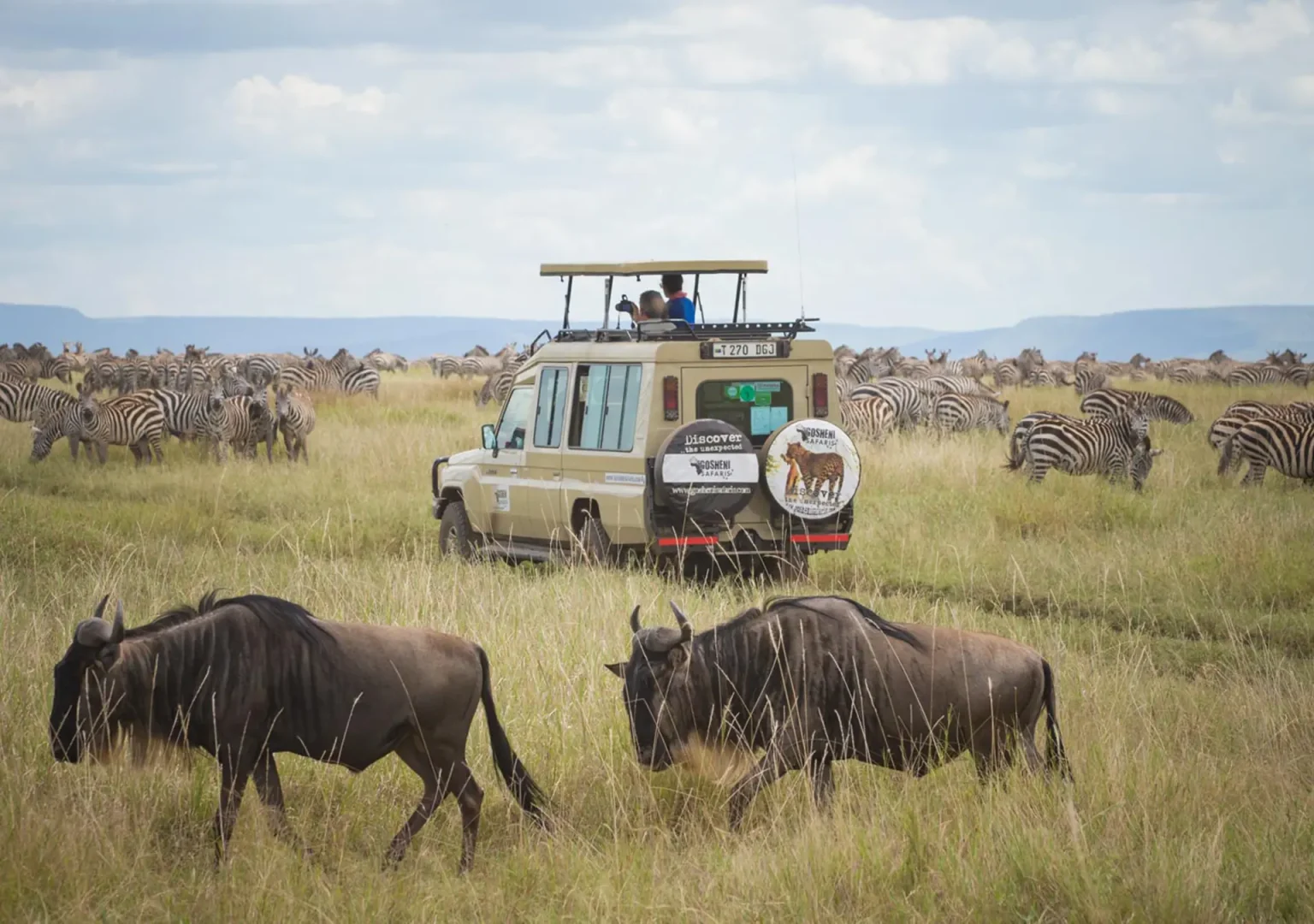
Capturing the perfect safari photos requires preparation and the right equipment. A digital SLR camera with lenses of at least 200 mm range is recommended for photographing wildlife in the Serengeti. A wide-angle lens (18 mm or less) is ideal for landscape photography, allowing you to capture the vastness of the Serengeti’s open plains.
Practicing with your camera settings before the trip ensures you can react quickly to changing conditions. Using a quality dust-free bag to protect your equipment is essential, given the dusty environment of the Serengeti.
Listening to local guides can enhance your experience and help you find the best photographic opportunities, ensuring you return home with stunning memories of your safari.
Summary
In summary, planning a Serengeti safari holiday in 2025 promises an adventure filled with breathtaking wildlife encounters, cultural experiences, and unforgettable memories. From understanding the best times to visit and how to get there, to choosing the right accommodation and activities, every aspect of your safari can be tailored to create a unique and fulfilling experience.
Embrace the magic of the Serengeti, whether it’s witnessing the Great Migration, spotting the Big Five, or engaging with the Maasai people. By prioritizing conservation and responsible tourism, you contribute to preserving this incredible ecosystem for future generations. Start planning your Serengeti safari today and embark on the adventure of a lifetime.
Frequently Asked Questions
What is the best time to visit the Serengeti for a safari?
The best time to go on a safari in the Serengeti is during the dry season, from June to October, when you’ll experience amazing wildlife viewing. Trust me, you won’t want to miss it!
How can I reach Serengeti National Park?
You can easily reach Serengeti National Park by choosing a drive-in safari, a fly-in safari, or a combination tour that fits your budget and travel style. Just pick the option that excites you the most!
What should I pack for a Serengeti safari?
For your Serengeti safari, make sure to pack lightweight, neutral-colored clothing, sunscreen, insect repellent, comfortable walking shoes, and your camera with protective bags. This way, you’ll be ready for an amazing adventure!
What are the accommodation options in the Serengeti?
You’ll find a variety of accommodation options in the Serengeti, from mobile tented camps and cozy mid-range lodges to luxurious stays that suit different budgets and preferences. Whatever you choose, you’re in for an unforgettable experience in this stunning landscape!
How can I ensure a safe safari experience?
To ensure a safe safari experience, make sure to avoid walking alone after dark and keep your valuables secure. Following guided rules during game drives is essential for your safety and enjoyment.


